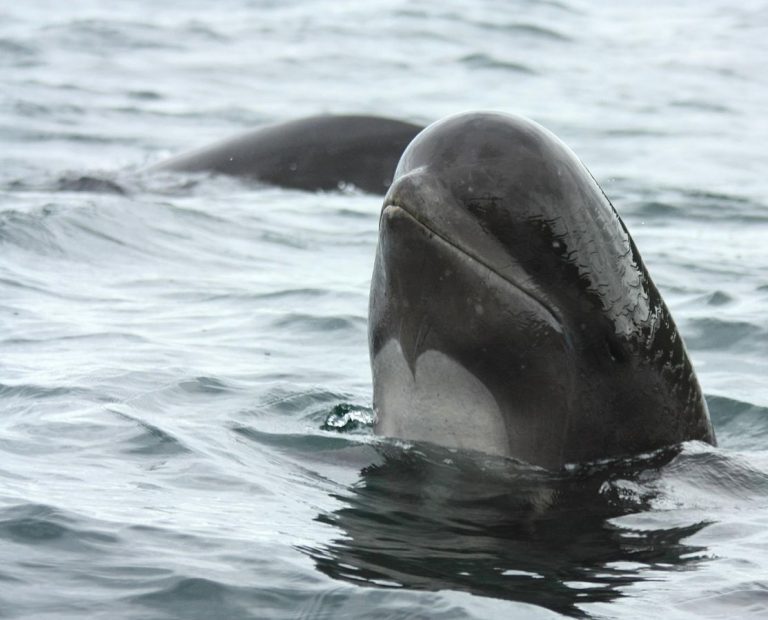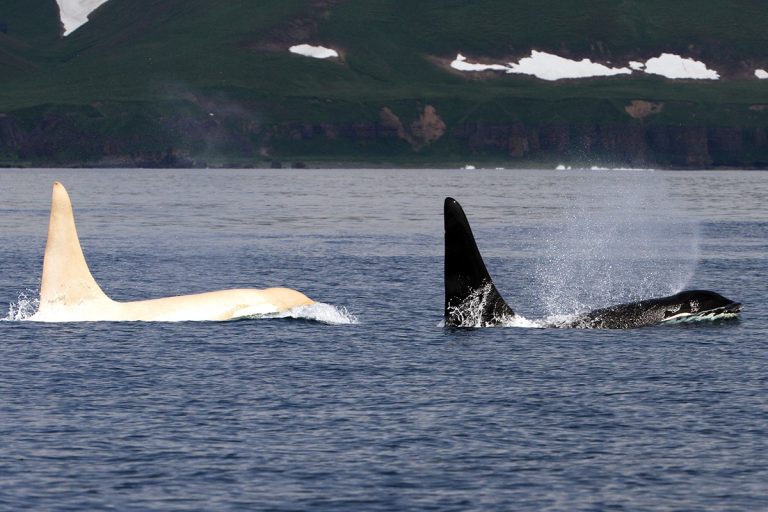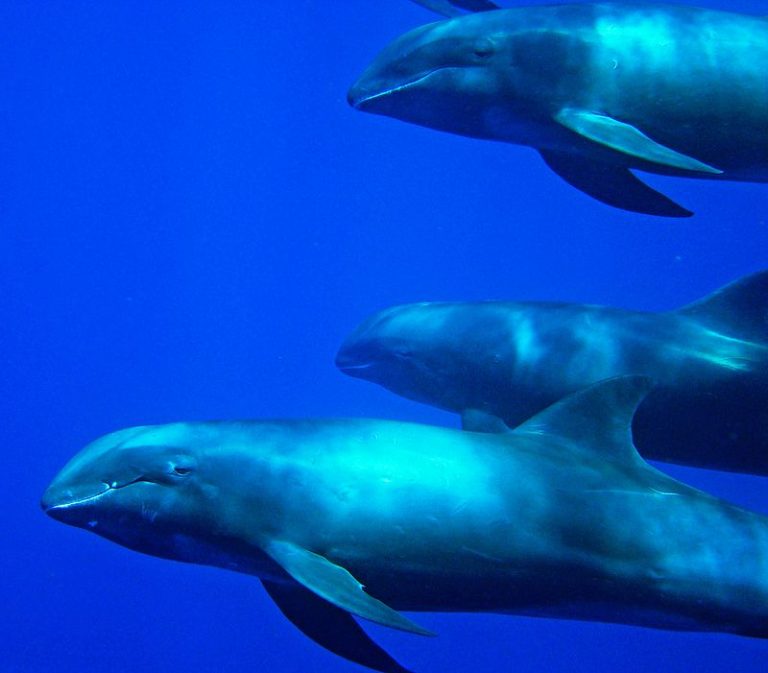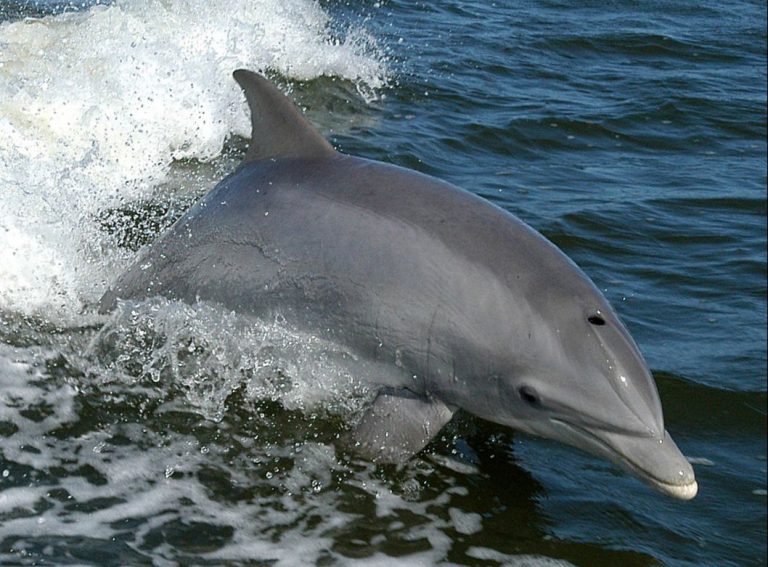Species Profile: The Striped Dolphin
The Striped Dolphin is a fast swimming and very cosmopolitan marine mammal.
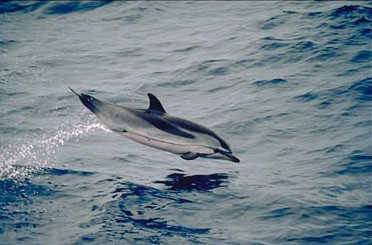
The Striped Dolphin is another well-known and extensively studied dolphin member of the Delphinidae (oceanic dolphin family). Their natural habitat is in temperate and tropical waters all over the world’s oceans.
This species is quite similar in size and shape to several other dolphins in the same habitat it lives in. Some of its neighbors include the pantropical spotted dolphin and the Clymene dolphin.
Nevertheless, it has a few distinguishing features that make it easy to spot from afar. For instance, its underside is colored blue, white, or pink. The striped dolphin also has one or two black bands that circle its eyes, and continue down its back to its flipper. Its flanks are light blue or gray.
These are very acrobatic and fast creatures: often seen breaching and jumping far out of the water. And just like most other dolphins in its family, this is a social animal. As a matter of fact, they move in large groups of 25 to hundreds and even thousands of individuals.
The IUCN lists the Striped Dolphin as a Least Concern Species.
1) Scientific Name
Stenella Coeruleoalba
2) Scientific Classification
- Kingdom: Animalia
- Phylum: Chordata
- Class: Mammalia
- Order: Artiodactyla
- Family: Delphinidae
- Genus: Stenella Coeruleoalba
3) Life Expectancy
Longevity is about 55 to 60 years.
4) Average/Maximum Length
Males grow to 2.6 (8.5 feet) meters and females 2.4 (8 feet) meters long.
5) Average/Maximum Weight
Females of the species weigh about 150 kg (330 lbs.) while males weigh in the range of 160 kg (352 lbs.)
6) Maximum Swimming Speed
Unknown.
7) Interaction With/Danger To Humans

These are friendly, curious dolphins and they often approach boats out of curiosity in the Atlantic and Mediterranean.
However, their kind in the Pacific are wary of humans due to excessive hunting in the past.
Japanese whalers in particular have been hunting the striped dolphin out in the western Pacific since about the 1940s. Back then, these hunts were called “striped dolphin drives”, taking up to 9,000 individuals every year.
In one reported case, up to 21,000 dolphins of this species were killed. However, the introduction of quotas has seen these numbers drop to around 1,000 striped dolphins killed per year.
Regardless of their large numbers, conservationists are still concerned about the Mediterranean populations of these dolphins. Like many other marine creatures, dolphins in the Mediterranean Sea are suffering the effects of pollution, and disease. Also, they are suffer from collisions with vessels, and heavy incidental catches by fisheries.
Humans have made several attempts to keep striped dolphins in captivity, as is commonly done with species like the common bottlenose dolphin but most of such efforts failed. Although the Taiji Whale Museum has succeeded in keeping some in captivity.
Striped dolphins are one of species specifically hunted in the infamous Taiji dolphin drive hunt.
8) Reproduction Details
Research suggests that females in the Mediterranean reach sexual maturity at 12 years while their kind in the Pacific do same at between seven and 9 years old. The specific mating system of these dolphins is not too clear but it appears males mate with multiple females.
Calves are born every three or four years after a gestation period of 12 months. Newborns are 1 meter (3 feet) long and weigh 10 kg (22 lbs.)
9) Diet/Hunting Pattern of The Striped Dolphin
Striped dolphins eat, squid, octopus, bony fish, krill, and other crustaceans. They can dive down to 700 meters (2,300 feet) to hunt deeper-dwelling species.
10) Population And Conservation Status
Striped dolphins remains one of the most abundant and widespread dolphins in the world. They are very common in all areas of its range, but some areas of low population exists.
The total estimated population is over two million.
The striped dolphin is protected under several international agreements. For example, the Convention on the Conservation of Migratory Species of Wild Animals (CMS), and so on.
The IUCN lists this dolphin as a Least Concern Species.
11) Ancestry And History
Franz Meyen was the first person to describe this dolphin in 1833. The closest relatives of the striped dolphin are the Clymene dolphin, the Atlantic spotted dolphin, and the Indo-Pacific bottlenose dolphin.
Its scientific name coeruleoalba comes from the Latin words caeruleus (dark blue) and albus (white) in respects to the coloring on its body.
12) Distribution And Habitat
These are very well distributed, cosmopolitan dolphins.
They are found in tropical and warm temperate waters around Greenland, northern Europe (the UK and Denmark), the Mediterranean Sea, Japan on to Argentina, South Africa, then Western Australia, and New Zealand.
Other sightings are around the Gulf of Mexico, Hawaii, the Indian Ocean, and the Pacific Ocean.

